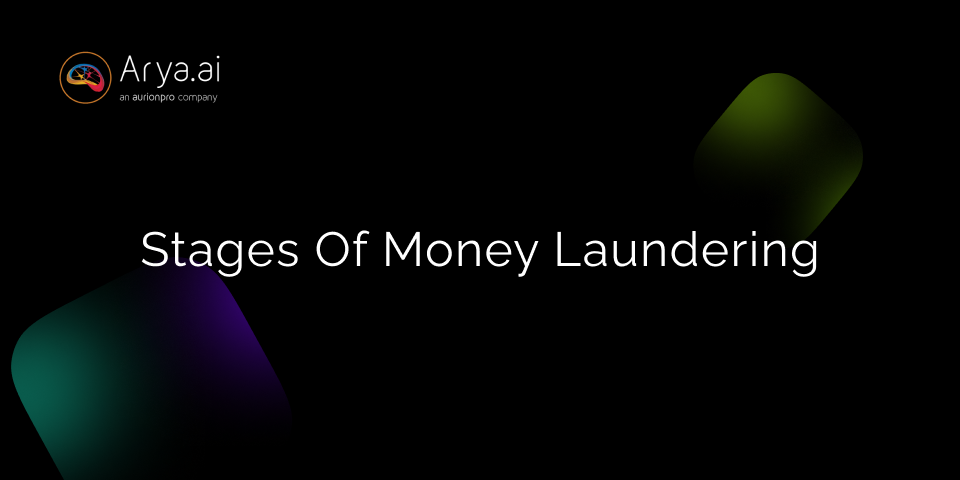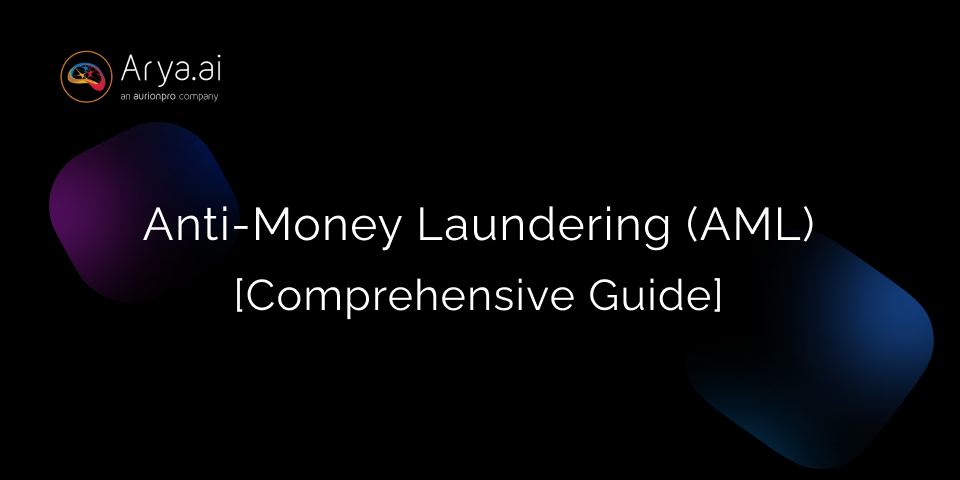Key Highlights:
- Three Stages of Money Laundering involves Placement, Layering, and Integration.
- Placement (Introducing illicit funds into financial systems), Layering (Separating illicit funds from their original source via a series of financial transactions), Integration (Reintroducing 'cleaned' money into legitimate economy)
- Techniques used in these stages are- structuring deposits, wire transfers, use of shell companies, asset purchases, and investing in legitimate businesses.
- Major cases like HSBC's Mexican cartel scandal (Placement), the Russian Laundromat (Layering), and the Odebrecht corruption scandal (Integration) showcase how these stages play out in real-life.
- Money laundering erodes financial institutions' integrity, increases crime and corruption, distorts markets, leading to broader economic instability.
Money laundering is a global issue that poses significant threats to the integrity of financial systems and economies. It involves disguising illegally obtained money to make it appear legitimate, allowing criminals to benefit from their illicit activities. According to the UN’s Office of Drugs and Crime, the estimated amount of money laundered globally in one year is 2 - 5% of global GDP, or $800 billion - $2 trillion. Due to the clandestine nature of money laundering, it is however difficult to estimate the total amount of money that goes through the laundering cycle.
Understanding how this process works is crucial in the fight against financial crime. In this blog, we'll explore the three key stages of money laundering—Placement, Layering, and Integration—highlighting the methods used in each stage.

Stage 1: Placement
Definition: Placement is the first stage of money laundering. At this stage, illegal funds are introduced into the financial system. The goal is to place large amounts of illicit cash into legitimate financial institutions without raising suspicion. Often, this is done by breaking up huge sums into smaller deposits or through the purchase of assets that can later be sold.
Common Techniques:
- Structuring (Smurfing): Splitting big cash amounts into smaller, less conspicuous amounts and depositing them into various accounts.
- Cash Deposits: Depositing money into banks in amounts just under the threshold for mandatory reporting (to avoid detection).
- Purchasing Assets: Buying high-value items like real estate, cars, or luxury goods, which can later be sold for legitimate money.
- Casino Transactions: Criminals might convert cash into gambling chips and cash out after minimal or no play, receiving a check from the casino that appears legitimate.
Case Study: HSBC's Money Laundering Scandal (2006-2010)
One of the most notorious examples of money laundering at the placement stage involved HSBC, a global bank that, between 2006 and 2010, failed to adequately monitor the influx of illegal funds into its system. The case came to light when US regulators found that HSBC had allowed Mexican drug cartels to launder billions of dollars through its branches, primarily in Mexico and the United States.
How the Placement Worked: Mexican drug cartels were depositing massive amounts of cash into HSBC's Mexican branches. To avoid suspicion, they would often structure the deposits by breaking down large sums into smaller, less noticeable transactions. These funds were then moved through the banking system without raising red flags, enabling the cartels to integrate the illicit money back into the legitimate economy. Over $881M were laundered for Colombia's Norte del Valle and Mexico's Sinaloa drug cartels.
Outcome: HSBC was fined $1.9 billion by US authorities for failing to maintain adequate anti-money laundering controls, a glaring example of how weaknesses in the placement stage can allow criminals to exploit financial systems.
Stage 2: Layering
Definition: Layering is the second stage of money laundering, where criminals seek to separate illicit funds from their original source through a complex series of financial transactions. The aim is to create multiple layers of transactions, making it difficult for regulators and investigators to trace the money back to its illegal origin. This stage often involves moving money across multiple accounts, often internationally, or converting it into different assets to further obscure the trail.
Common Techniques:
- Wire Transfers: Transferring money through multiple bank accounts in different countries makes it hard to follow the money trail.
- Shell Companies: Creating dummy corporations in offshore jurisdictions to move and hide the origin of funds.
- Purchasing and Reselling Assets: Buying and quickly reselling items like art, real estate, or luxury goods.
- Complex Financial Products: Using securities, bonds, or derivatives to mask the flow of money.
Example/Case Study: The Russian Laundromat (2010-2014)
The Russian Laundromat case is a perfect illustration of the layering stage. Between 2010 and 2014, an estimated $20 billion was laundered out of Russia using a sophisticated network of over 21 shell companies, fake loans, and multiple layers of financial transactions.
How the Layering Worked:
- Criminals set up shell companies in offshore jurisdictions like the UK, Cyprus, and Moldova.
- These shell companies created fake loan agreements with each other, pretending to move money under the guise of legitimate business transactions.
- Once the funds were transferred between accounts in Russia and Moldova, the money would be wired to various accounts in Western Europe, the US, and Hong Kong.
- In some cases, the funds were used to purchase high-value goods, including luxury real estate, art, and even private jets.
Because the money passed through so many different layers—banks, companies, and jurisdictions—it became nearly impossible to trace back to its original source.
Outcome: Investigations by journalists and financial authorities revealed the complex web of transactions. This led to the exposure of several major banks involved in facilitating these transfers, including Deutsche Bank, Danske Bank, and Standard Chartered. Many of these institutions faced hefty fines for failing to detect suspicious activity during the layering process.
Stage 3: Integration
Definition: Integration is the final stage of money laundering, where the "cleaned" money is reintroduced into the legitimate economy, appearing as though it has come from legal sources. At this point, the funds can be used freely for investments, purchases, or business activities, as their illicit origins have been successfully obscured through the previous stages (Placement and Layering). This stage is particularly dangerous because the laundered money can now be indistinguishable from legitimate funds, making detection very difficult.
Common Techniques:
- Investments in Legitimate Businesses: Criminals invest laundered money into businesses or ventures that appear legitimate, allowing them to generate "clean" profits.
- Real Estate: Purchasing property with illicit funds and then reselling or renting it out to earn legitimate income.
- Loan-Back Schemes: The launderer loans their own laundered money back to themselves through a legitimate financial institution.
- Front Companies: Criminals use legitimate businesses as fronts to funnel and integrate their laundered money back into the economy.
Case Study: The Odebrecht Scandal (2001-2016)
The Odebrecht Scandal is one of the largest money laundering and corruption cases in history involving the Brazilian construction giant Odebrecht. Between 2001 and 2016, Odebrecht paid over $788 million in bribes across multiple countries to secure lucrative government contracts. The bribe money was funneled through a complex network of shell companies and offshore accounts before being reintroduced into the economy through legitimate channels.
How the Integration Worked:
- Odebrecht used a network of offshore shell companies, primarily in Switzerland and the British Virgin Islands, to transfer illicit bribe payments.
- Once the money had been moved through various layering stages, it was integrated back into the legitimate economy by securing large public contracts across Latin America, allowing Odebrecht to earn billions in legal profits.
- The bribe money helped the company win public infrastructure projects, including highways, airports, and energy plants. These legitimate projects became the final layer of the integration stage, where illegal funds were hidden under the guise of legal business operations.
Outcome: After years of investigation, Odebrecht executives, in coordination with Brazilian and US authorities, admitted to paying bribes in exchange for government contracts. The company was fined $3.5 billion and became a symbol of widespread corruption across Latin America. The case also exposed corrupt practices in countries like Venezuela, Mexico, and Argentina as part of a much larger network of money laundering and bribery.
Impact of Money Laundering on the Economy
- Erosion of Financial Institutions' Integrity: Money laundering weakens the credibility of banks and financial systems, causing a loss of trust from investors, customers, and regulators.
- Increased Corruption and Crime: By enabling organized crime, drug trafficking, and terrorism financing, money laundering leads to more widespread corruption and destabilization of economies.
- Distortion of Markets: Illicit funds injected into the economy can artificially inflate asset prices (e.g., real estate), distorting competition and making markets volatile.
- Reduced Government Revenue: Laundered money typically avoids taxation, leading to reduced government revenues, which impacts public services and infrastructure investment.
- Economic Instability: Unchecked money laundering can result in capital flight, destabilizing currencies and creating economic volatility in both developed and developing nations.
- Hampers Foreign Investment: Countries with significant money laundering activities are less attractive to foreign investors due to perceived risks of instability, crime, and poor governance.
Current Regulatory and Legal Framework
The current regulatory and legal framework for combating money laundering is built on global, regional, and national efforts to prevent the flow of illicit funds through financial systems.
- Financial Action Task Force (FATF): Global standard-setter for anti-money laundering (AML) efforts; issues recommendations for countries to follow.
- AML Laws: Countries have specific laws (e.g., the US Bank Secrecy Act and the UK Proceeds of Crime Act) that require financial institutions to report suspicious transactions.
- Know Your Customer (KYC) Regulations: Mandates financial institutions to verify the identity of clients, reducing anonymous accounts that facilitate money laundering.
- Suspicious Activity Reporting (SAR): Banks and other financial institutions are required to report unusual or suspicious financial transactions to authorities.
- International Cooperation: Cross-border collaboration between regulators and law enforcement agencies to track and investigate money laundering schemes globally.
Conclusion
Understanding the three stages of money laundering—Placement, Layering, and Integration—is crucial for recognizing how illicit funds infiltrate and disrupt the global economy. The impact of money laundering extends beyond individual cases, undermining the integrity of financial systems, fueling corruption, and stifling legitimate businesses. As the methods employed by criminals evolve, so too must the strategies used by regulators and financial institutions to combat these activities.




